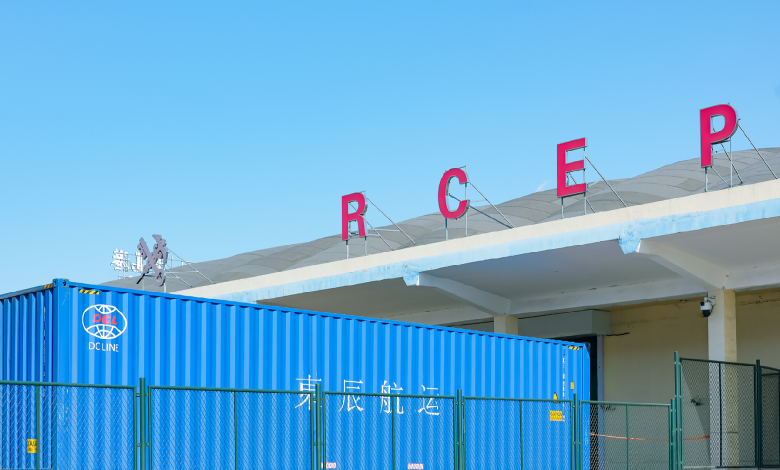RCEP injects new momentum into China-ASEAN cooperation

[ad_1]

<img src='https://news.cgtn.com/news/2024-09-25/RCEP-injects-new-momentum-into-China-ASEAN-cooperation-1xbie0ozBfy/img/d8374b7836d4401c8bd0f27a4c391593/d8374b7836d4401c8bd0f27a4c391593.png' alt='The Qingdao Customs Inspection Center of the RCEP on January 28, 2023./CFP'
Editor’s note: Yuan Bo is director of the Asia Research Institute, Institute of International Trade and Economic Cooperation, Ministry of Commerce, China. The article reflects the author’s opinions and not necessarily the views of CGTN. It has been translated from Chinese and edited for brevity and clarity.
The Regional Comprehensive Economic Partnership (RCEP) has continually unlocked the potential for regional economic and trade cooperation since its implementation over two years ago, presenting more market opportunities for enterprises in China and ASEAN.
In the first half of this year, total trade within the RCEP region remained high, reaching $2.8 trillion. Specifically, China and ASEAN registered $955.04 billion and $1 trillion (excluding Myanmar, Laos and Brunei) in intra-regional trade volume, respectively. They accounted for 70 percent of the total trade within the RCEP region.
China’s trade with RCEP partners saw a surge in integrated circuits, automatic data processing equipment, flat panel display modules, petroleum products, electric vehicles, textiles, and furniture. ASEAN also experienced breakneck growth in trading goods such as electronic products, machinery, steel products, aluminum and aluminum products, ships, grains, edible fruits, and nuts within the RCEP region. The expanding RCEP market provides extensive development opportunities for enterprises, both in China and ASEAN.
Against the backdrop of RCEP’s implementation, China-ASEAN economic and trade relations have deepened. Bilateral trade and investment scales have shot up from their previous levels: In the first eight months of this year, total goods trade between China and ASEAN reached $633.48 billion, up 7.8 percent year-on-year, making up 15.7 percent of China’s total foreign trade. It grew 4 percentage points faster than China’s overall foreign trade. As of July this year, cumulative bidirectional investment between China and ASEAN countries exceeded $400 billion.
China’s vigorous efforts to develop new quality productive forces have also brought both sides new growth opportunities and momentum. RCEP covers an e-commerce chapter, building on which China and ASEAN have further incorporated elements related to the digital and green economies in the negotiations for the China-ASEAN Free Trade Area (FTA) 3.0. As the implementation of RCEP proceeds further and the construction of China-ASEAN FTA 3.0 is underway, China and ASEAN are expected to see broader cooperation space in emerging and future fields such as artificial intelligence, the digital and marine economies, as well as the low-carbon transformation, which is conducive to jointly fostering new economic growth drivers by the two sides.
The combined implementation of RCEP and the China-ASEAN FTA will form joint forces to drive the continuous expansion of bilateral trade and investment scales, deeper integration of production and supply chains, and further collaboration in emerging industries. This will consolidate and improve China-ASEAN economic and trade relations in terms of both quantity and quality, thus laying a solid foundation for economic and trade cooperation to build a closer and more inclusive China-ASEAN community.
[ad_2]
Source link





